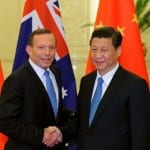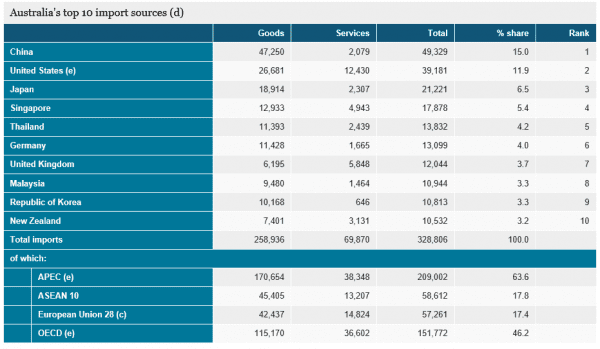 After ten years of negotiations, Australia’s Free Trade agreement with China was finally signed on Monday 17 November. There’s been a frenzy of media celebrating new opportunities for Australian beef and dairy farmers, miners, even professional and education services. But what does the China-Australia FTA mean for importers?
After ten years of negotiations, Australia’s Free Trade agreement with China was finally signed on Monday 17 November. There’s been a frenzy of media celebrating new opportunities for Australian beef and dairy farmers, miners, even professional and education services. But what does the China-Australia FTA mean for importers?
Free Trade Agreements require concessions from both sides. It’s logical to expect changes for import as well as export, but the detail of these has been much less reported. The official DFAT web page listing key outcomes of the FTA doesn’t have any information on import changes either. The only concession it covers relates to scrutiny of investment in Australia by private Chinese businesses.
Import Tariff Reductions
In 2013, Australia imported over $47 million worth of goods from China in 2013. This is 18% of total goods imported by value, and means China is already our largest import partner. Growth in Chinese imports looks set to continue.

The China Spectator reports that as a result of the FTA, ‘tariffs will be phased out on 95 per cent of all Chinese imports within four years. Important Chinese exports such as clothes, footwear, household electronics and cars will be tariff free by 2019.’
From a consumer perspective, this should mean reduced prices. From a manufacturing perspective, it’s not such a happy story.
At least there are phase-out periods for tariffs in the automotive, steel, aluminium, plastics, canned fruit, carpets, clothing and footwear sectors. So manufacturers will have some time to review operations and adapt to the new market situation.
Note that tariff reductions are not limited to the implementation of FTAs. If you’re in the clothing and textiles sector, you should also be aware of tariff reductions coming into force from January 1, 2015. No matter where you’re importing from, customs duties will drop from 10% to 5% for garments, garment accessories and other textiles.
Timeline
While the FTA has been signed, there are still a number of steps to go through before it comes into force. This includes translation, review by Parliament, and any necessary legislative changes. Once all these steps are complete, there’s a 30 day grace period before the terms of the FTA take effect.
It’s fair to say the China-Australia FTA will not take effect before 2015 – exactly how far into 2015 it takes effect is harder to judge.
Impact on your Business
Reducing the costs of imports from China is likely to be as important to small businesses as encouraging more exports to China.
That’s the opinion of David Morfesi, Executive Director of the Institute for International Trade at the University of Adelaide. Morfesi was a senior trade negotiator in the Office of US President when the US free trade deal with Australia was being negotiated, so he has some experience. In his view, we “need low cost imports to be competitive in both our domestic and export products.” It’s a position Hornet understands and generally supports. So for example sourcing production moulds from China could help keep manufacturing in Australia. We also examined a case study which combined on-shore and off-shore manufacturing.
***
So what are your options if you’re in one of the sectors mentioned above where import tariffs will change?
Manufacturers will need to look at costs and productivity. You may need to revisit the on-shore / off-shore debate. Or in your specific market, there may be a value advantage in the ‘made in Australia’ brand which can help you counter price competition.
Retailers, wholesalers and distributors have more options. You may want to review how you source your products, to see which suppliers are most attractive under the new regime.
And if sourcing from China is one of the options you want to assess, talk to Hornet and let’s see if we can help!
***
Update 1 Dec 2014:
“…ChAFTA does suggest the potential for increased manufacturing in Australia for the U.S. market using Chinese components…”An interesting angle from the (US-based) National Law Review which we wouldn’t have thought of straight away.
Import components from China to Australia with minimal or no tariffs. Manufacture and export to the US with minimal or no tariffs. More cost effective than direct import from China to US which still attracts tariffs.
***
Sources:
http://dfat.gov.au/publications/tgs/index.html
http://dfat.gov.au/fta/chafta/fact-sheets/key-outcomes.html
http://dfat.gov.au/fta/chafta/fact-sheets/implementation-timeline.html
http://www.businessspectator.com.au/article/2014/11/18/china/reality-check-china-australia-fta?
***
You may also like these other posts from Hornet:
